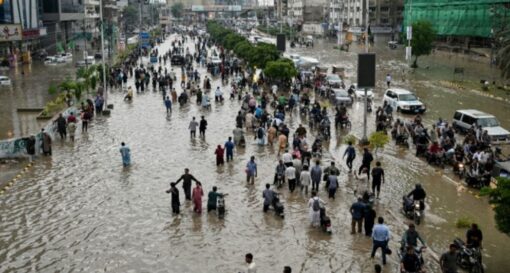Israel’s archaeology strategy is rapidly becoming one of the most contested tools in its political playbook, sparking a Jerusalem heritage conflict that reaches far beyond the city’s ancient walls.
By highlighting carefully selected excavations and promoting them as proof of exclusive Jewish claims, the government has transformed archaeology into a diplomatic instrument to cement US Israel politics.
When US Secretary of State Marco Rubio toured Jerusalem this month, Prime Minister Benjamin Netanyahu led him through underground tunnels and along the recently inaugurated Pilgrimage Road, presenting the sites as timeless evidence of Jewish roots in the city.
For Israel, these projects serve as both cultural showcase and political leverage; for critics, they symbolize a deliberate rewriting of history.
The strategy has raised deep concerns among independent archaeologists, international observers, and Palestinian communities who view it as an effort to erase the region’s diverse historical narrative.
Prime Minister Benjamin Netanyahu personally guided him through subterranean tunnels beneath the Western Wall and the so-called “Pilgrimage Road,” a recently inaugurated project that traces an ancient Roman-era pathway.
The message was unmistakable: Jerusalem, presented as the eternal and undivided capital of Israel, stands at the center of Jewish history and identity.
Rubio described the tunnel as “one of the most significant archaeological sites on earth.” Standing beside Netanyahu and U.S. ambassador Mike Huckabee, a vocal evangelical pastor, the tour fused religious conviction with political endorsement.

For Israel’s government, the event demonstrated American solidarity at a moment when debates over annexation and Palestinian sovereignty remain unresolved.
For critics, however, it epitomized what they call “tunnel vision”—a narrow interpretation of history that marginalizes other cultures and faiths that shaped the city over millennia.
The project at the heart of the controversy is located in the Silwan district of East Jerusalem, an area internationally recognized as occupied territory. Managed by the settler organization Elad, the “City of David” archaeological park has been repeatedly denounced by the United Nations for politicizing archaeology.
Excavations have been carried out beneath Palestinian homes without consent, sparking anger among residents who see the work as part of a broader effort to displace them.
Independent experts argue that the historical claims attached to these excavations are overstated. Some archaeologists dispute whether the structures identified as the biblical City of David can be conclusively linked to ancient Jewish history.
Alon Arad, head of the Israeli NGO Emek Shaveh, has called the work “bad archaeology,” accusing it of employing outdated and discredited methods such as tunnel excavation. “Once you dig in tunnels,” he explained, “you gain only a very narrow perspective. It is not scientific excavation; it is political branding.”
The criticism extends beyond methodology. According to a UN commission of inquiry, the narrative promoted at the site emphasizes exclusively Jewish history while disregarding the contributions of other civilizations—Byzantine, Islamic, Ottoman, and even early Christian. “Despite Jerusalem’s multi-layered past,” the commission stated, “the presentation of history has been reduced to a single storyline that serves current political agendas.”
The intertwining of archaeology and politics is not new in Jerusalem, but recent events have made it especially visible. While Netanyahu was showcasing the tunnels to Rubio, Israeli warplanes bombed a storage depot of ancient artifacts in Gaza City, destroying decades of archaeological work.
The depot housed tens of thousands of items collected over 30 years, representing multiple cultures and religions. Archaeologists managed to save some objects before the strike, but many were lost.
For Palestinian and international scholars, the destruction underscored the double standard in Israel’s handling of cultural heritage. On one hand, sites in Jerusalem are meticulously presented to bolster national claims. On the other, Palestinian heritage sites are left vulnerable to damage or destruction.
“Israel has obliterated hundreds of cultural treasures since the war began,” Emek Shaveh said in a statement, calling the Gaza depot bombing “an irreparable blow to global heritage.”
Israel’s military authority in occupied territories, known as COGAT, defended its role, claiming it had facilitated the transfer of Christian antiquities from the warehouse before the strike.
Archaeologists involved in the evacuation dispute that description, insisting that the collection spanned multiple civilizations and was not exclusively Christian. “It is another attempt to reframe history in a way that aligns with evangelical support in the United States,” one French scholar from the École Biblique remarked.
The influence of evangelical politics is central to the controversy. Huckabee, who accompanied Rubio and Netanyahu on the Jerusalem tour, has long rejected the idea of a Palestinian state and even denied the existence of a Palestinian identity.
His rhetoric mirrors that of the Israeli right, which uses biblical terminology such as “Judea and Samaria” in place of “West Bank.” For evangelical supporters in the U.S., projects like the Pilgrimage Road reinforce their theological conviction that Israel’s sovereignty over Jerusalem is divinely ordained.
This alignment has significant geopolitical consequences. Netanyahu, who has consistently opposed a two-state solution, now enjoys the backing of senior U.S. officials who view annexation favorably. Archaeology, in this context, becomes not just about stones and artifacts but about legitimizing political decisions with ancient narratives.
Critics say the approach risks alienating other communities and destabilizing the fragile coexistence of Jerusalem’s diverse residents. Palestinians living in Silwan have protested repeatedly against home demolitions and archaeological digging beneath their neighborhoods. Human rights groups argue that the projects contribute to forced displacement and undermine prospects for peace.
For archaeologists committed to scientific integrity, the concern is broader. The selective use of evidence to promote a single story distorts public understanding of the past. “Archaeology should illuminate complexity, not erase it,” Arad emphasized. “Jerusalem’s heritage belongs to the world, not to one political movement.”
Despite growing international criticism, Israel shows no sign of halting these projects. For Netanyahu, the combination of religious symbolism, political gain, and American backing makes them too valuable to abandon. As long as U.S. leaders like Rubio and Huckabee continue to embrace this narrative, the strategy will remain central to Israel’s diplomacy.
The stakes extend beyond academic debate. In a region where identity, memory, and territory are tightly bound, the rewriting of history influences negotiations, alliances, and even conflict.

By framing Jerusalem as exclusively Jewish, Israel strengthens its claim to permanent sovereignty over the entire city—while leaving little room for compromise with Palestinians who view East Jerusalem as their future capital.
The archaeological struggle over Jerusalem thus reflects a deeper battle over legitimacy and survival. To Israel’s government, tunnels and artifacts reinforce an unbroken claim to the land.
To Palestinians and many historians, they represent an attempt to erase centuries of shared heritage. And to the wider international community, they pose a question: can history be used as evidence for justice, or will it remain a weapon of politics?
As bulldozers continue digging beneath Silwan and bombs destroy warehouses in Gaza, the answer may shape not only the future of archaeology but also the prospects for peace in one of the world’s most contested cities.


